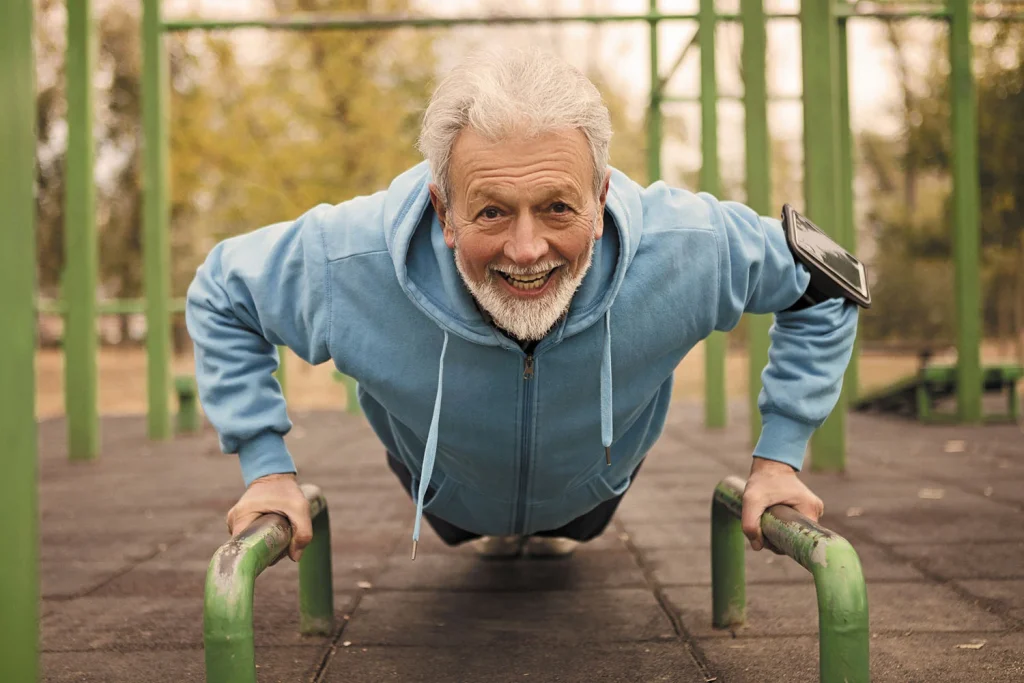
Do’s and Don’ts of Seniors’ Exercise
How much do you know about seniors’ exercise? Some people may think that sports are only for young people, but this is a misconception. Everyone at any age can exercise and benefit from its benefits. By exercising and being active, seniors will definitely have a healthier and better quality of life. As people age and start to age, their physical and mental activities decrease, and they experience weakness in their physical strength, disruption of the digestive system, decreased digestion and absorption of food, and mental imbalance, depression, hopelessness, and feelings of worthlessness.
Neglecting and neglecting one’s body and mind during this period accelerates premature aging and ultimately leads to premature death. Seniors’ sports and the physical and mental health of seniors have been the focus of attention of scientists in this field since ancient times, and each of them has explained and recommended detailed scientific programs for this period. In this Human Health Mag article, we’ll discuss important points about exercise for seniors, answer any questions you may have about exercise plan for old people, and introduce some exercises that are appropriate for this age group.
Is Exercise Good for Seniors?
Yes, seniors’ sports have many benefits. You can enjoy exercise and its countless benefits at any age. There are many reasons to stay active and exercise, and it has nothing to do with your age. In addition to being beneficial, exercise and physical activity can be fun, especially if you can socialize with other people at the same time.
Exercise will also help keep your mind active and improve your quality of life. For example, this group of people can do flexibility exercises for seniors over 70. Exercising seniors on a daily basis can reduce the risk of the following diseases:
- Obesity
- Heart disease
- Type 2 diabetes
- High cholesterol
- High blood pressure
- Some types of cancer
- Bone problems, including osteoporosis
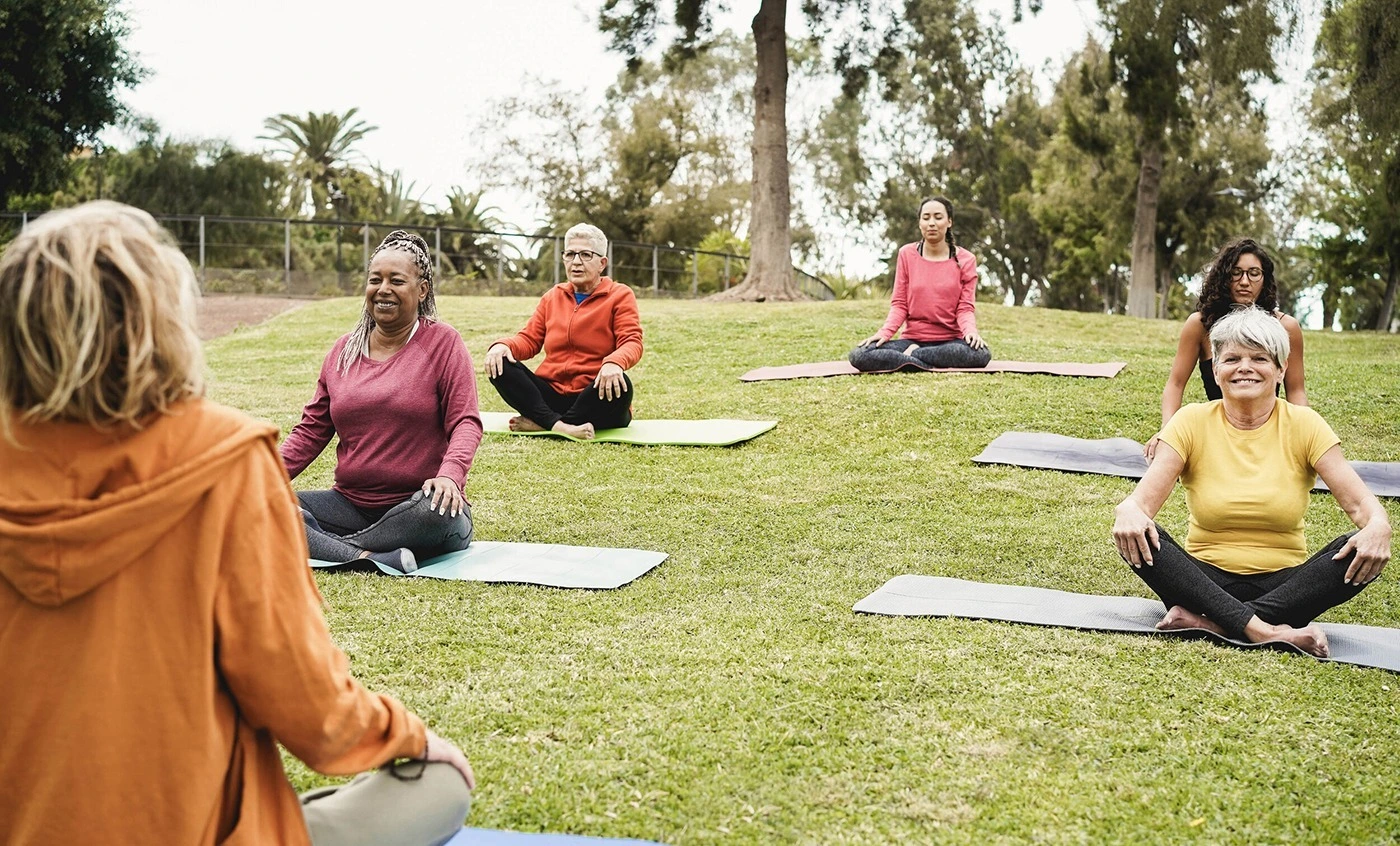
Effects Does Seniors’ Exercise have on Improving Life?
In general, seniors’ exercise, having enough physical activity and mobility can directly affect your standard of living and improve your overall well-being through the following methods.
- Increasing energy
- Improving mood
- Improving sleep quality
- Reducing stress and anxiety levels
- Reducing pain from conditions such as arthritis
On the other hand, spending a lot of time sitting (sedentary) may increase the risk of disease. So do not neglect seniors’ sports and sufficient physical activity. Even a few minutes of walking or stretching can be very beneficial. For example, yoga exercises for seniors, in addition to the many benefits it has for the body, are also beneficial for the mood and sleep of seniors. You can even do lying and seated exercises for seniors at home.
Can Physical Activity Slow Down the Aging Process?
Seniors’ sports and some types of physical activity, such as resistance training and flexibility training, can delay the physical changes that come with aging. Most people lose some muscle mass, bone density, and flexibility as they age. Chronic health problems can also contribute to frailty and bone loss.
Remember, physical activity improves your overall health, reduces your risk of chronic diseases, and reduces your frailty. This means that staying active can help you live longer and with a better quality of life. As we said, exercise can always be beneficial for people of all ages. Exercise for seniors also has many benefits, including:
- Improves your strength; this helps you stay independent and less dependent on others for tasks
- Prevents diseases such as heart disease, diabetes, or osteoporosis
- May improve cognitive function (how your brain works)
- Can improve your mood and fight depression
- Improves your balance and prevents falls
- Gives you more energy
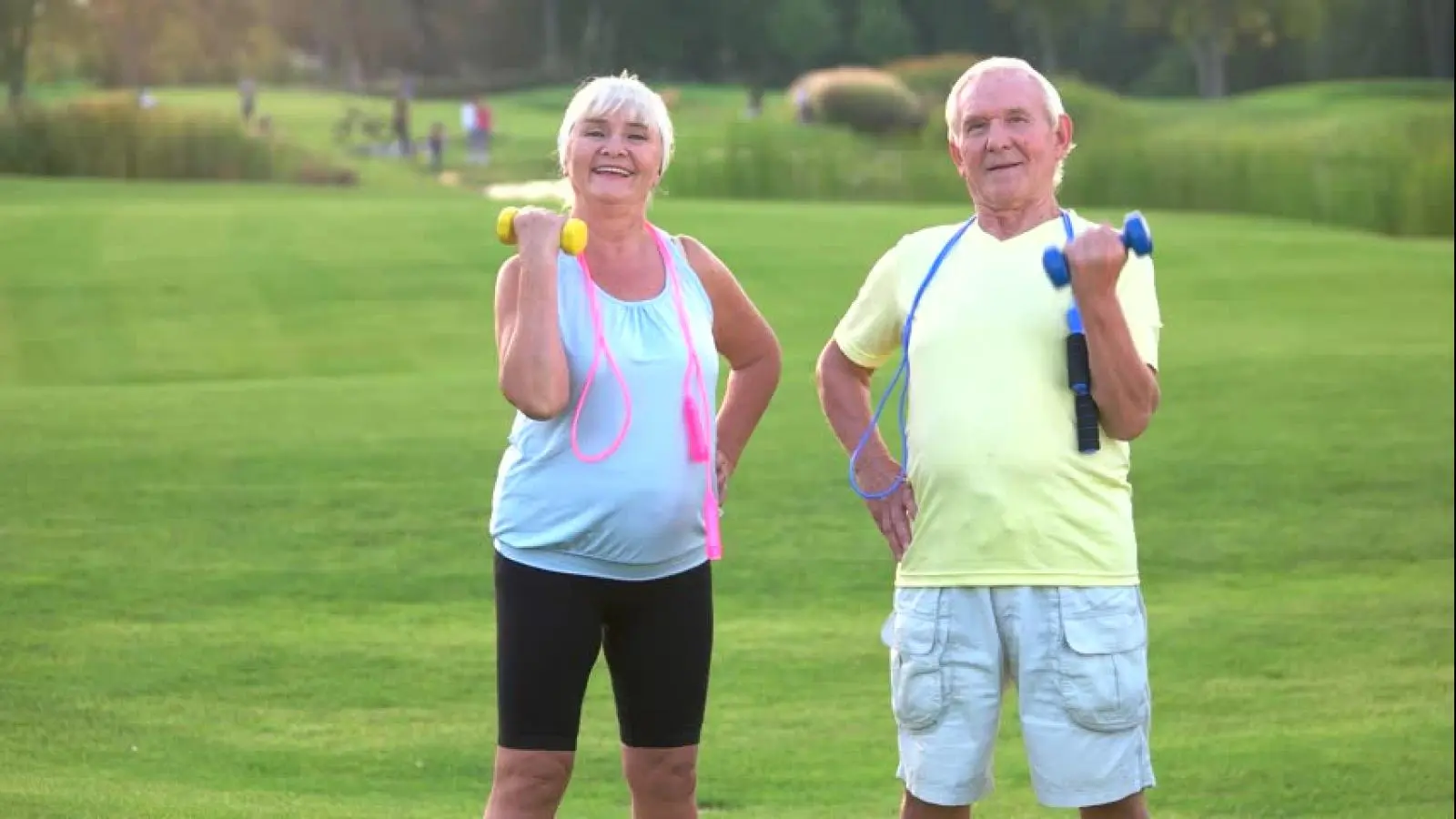
The Best Exercise for Seniors
Seniors’ exercise involve lighter exercises that don’t involve the slightest bit of injury. There are four main types of physical activity that are important for people of all ages.
Light Aerobic Exercise
Cardiovascular (aerobic) fitness activities help keep your heart and lungs healthy. These include the following, and it’s best to do them in moderation and not push yourself too hard.
- Cycling
- Walking
- Dancing
- Aerobics
- Tennis
- Swimming
Housework such as gardening and cleaning can also be great aerobic exercise. Activities such as swimming and pilates for the elderly can also be beneficial for people who find regular exercise painful due to conditions such as arthritis.
Strength and Resistance Exercises
Strength exercises help your muscles and bones stay strong. Strength training and bodybuilding in old age are especially beneficial in increasing bone density and reducing the risk of falls in people with osteoporosis. Exercise for the elderly and these exercises include the following:
- Weight training
- Resistance training with body weight
- Lifting and carrying (for example, food or small children)
Try to include strength and muscle building exercises in your daily routine 2 to 3 times a week. I recommend getting a dedicated exercise program and exercising with it. Fitamin will design a suitable and systematic exercise program for you according to your physical condition and goal.
Stretching and Flexibility
Flexibility activities include gentle stretching and flexibility exercises that help you move more easily. Such exercises include the following:
- Yoga
- Taichi
- Pilates
- Dancing
Try to do some stretching exercises every day. You can even stretch your body while watching TV or waiting for the kettle to boil.
Balance Exercise
Exercise for seniors can include activities that help you build and maintain balance, with the goal of preventing falls. The following exercises will help you get closer to this goal:
- Tai Chi
- Yoga
Remember, you can exercise outside of a gym or class. There are also online fitness tools and programs you can use at home. Even people with limited mobility or disabilities can find ways to stay active. It just takes a customized plan that takes your limitations into account.
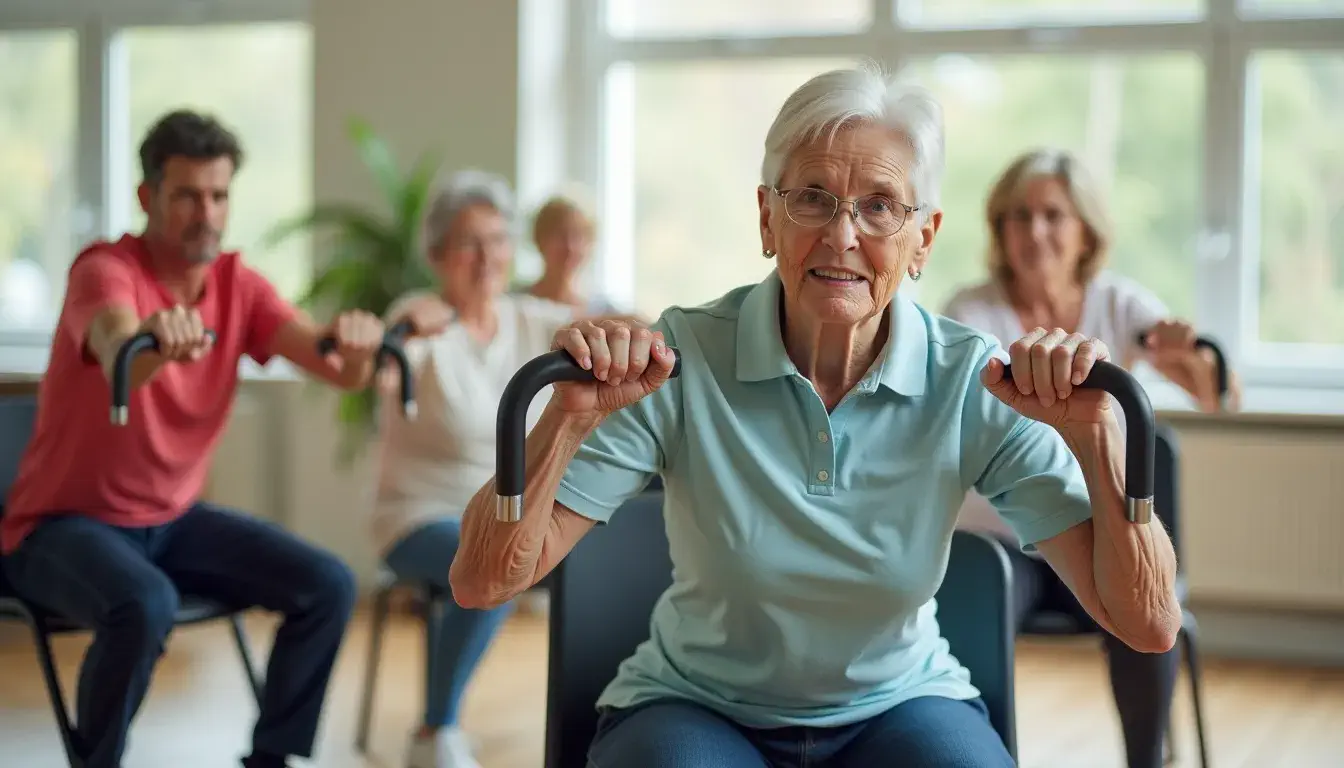
Dangerous Exercises for Seniors
It is true that seniors’ exercise have many benefits for these people and all health and wellness centers constantly encourage all people to exercise, but there are also sports that should be recommended with caution to the elderly or even prohibited for them. Yoga and light Pilates exercises are among the activities that can help older people keep their muscles and bones strong. However, it is very important to be aware of the exercises that are generally considered dangerous for older people. Here are some of the inappropriate sports for the elderly:
Long-distance running
The body’s aerobic capacity naturally decreases with age. But long-distance running is usually not recommended for older people, especially those with a history of respiratory diseases. This type of exercise can even be dangerous. Safe alternatives to this type of exercise include:
- Moderate jogging over shorter distances
- Brisk walking
- Light jogging
- Swimming
Some older adults may need help to stay safe while exercising. If your elderly loved one needs help managing their daily tasks or exercising, be sure to help them and don’t let this stop them from exercising.
Running | Stair climbing
Balance naturally decreases with age, so there is a chance of falling, and this risk is increased during sports that require balance. Therefore, your senior does not need to and should not engage in sports that may cause falls. For example, stair climbing, rock climbing, running, and repeated stair climbing can be hard on your hips, knees, and ankles. The same muscle groups can be safely targeted with the following exercises:
- Brisk walking
- Lightweight Pilates
- Stationary cycling
- High-intensity aerobics such as HIIT
Walking, water aerobics, Pilates, and cycling are examples of safe, low-impact aerobic activities for seniors. What seniors should avoid is high-intensity cardio, or strenuous, aerobic exercise. In addition to putting too much strain on the heart and lungs, such exercise also increases the risk of injury. Therefore, high-intensity aerobics should not be included in senior exercise, and seniors should avoid high-intensity interval training.
Weighted Squats
Squatting can be very beneficial for seniors who do not have spinal or joint injuries. However, adding heavy weights can put a lot of stress on various lower body structures, including the hips, upper thighs, and knees. Instead, seniors are better off skipping the weights and focusing on maintaining proper form. If you want to get the most out of squats, one surefire way is to increase the number of reps and avoid using dumbbells or heavy weights.
Leg Presses and Crunches
These two gym exercises are potentially dangerous for seniors because they place the lower spine in an unnatural position for long periods of time. This increases the risk of long-term problems with spinal disc damage or sciatic nerve irritation. Safer options for seniors include:
- Lower body exercises with resistance bands
- Short-circuit plank exercises
- Easy Pilates exercises
Sample Seniors’ Exercise Program at Home
Now we present a sample seniors’ sports program at home for you, my dears:
- Saturday: Strength training
- Sunday: 30 minutes of moderate walking
- Monday: Thirty minutes of light aerobics, such as stationary bike, swimming or low-intensity aerobics
- Tuesday: Rest
- Wednesday: Strength training
- Thursday: Thirty minutes of light aerobics, such as stationary bike, swimming or low-intensity aerobics
- Friday: Rest
Note: Be sure to consult a specialist trainer for strength training and, if possible, get a plan from him/her.
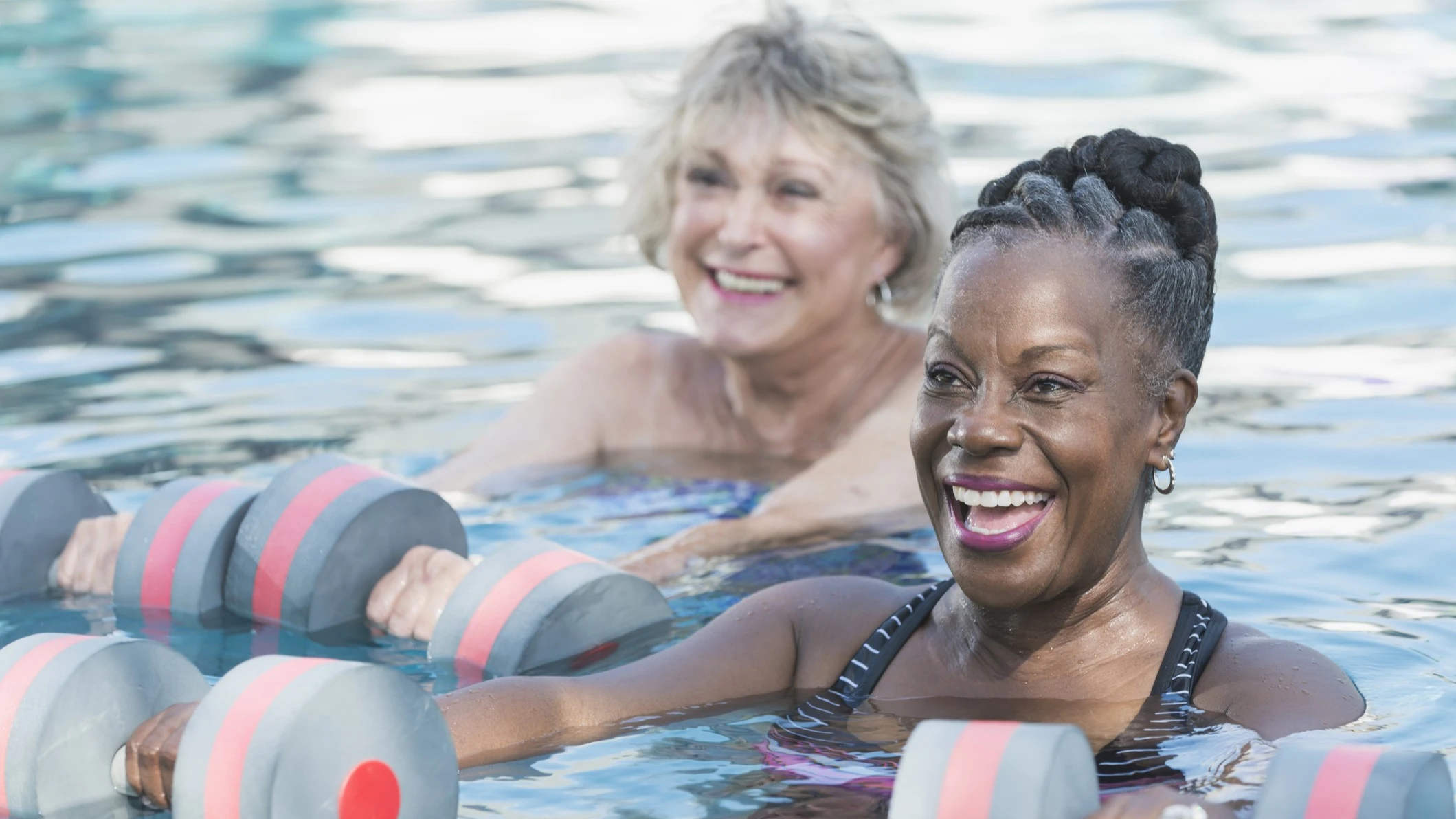
Myths About Physical Activity and Sports for Seniors
When it comes to seniors’ sports, we realize that there are several misconceptions about this topic. Thoughts that unfortunately prevent seniors from exercising and their health. We will introduce these thoughts that are nothing more than myths.
Myth 1: Seniors can’t go to the gym!
Fact: Gyms are not just for young people. Many seniors enjoy working out in gyms or participating in sports classes. As a dear senior, you just need to find a class that is appropriate for your level and an expert instructor to exercise in the best way.
Myth 2: Weak people can’t exercise!
Fact: Most people can find enjoyable and safe ways to exercise, even if they have physical problems and limitations or are weak. Physical activity can actually help you become stronger.
If you are looking for an activity that is suitable for seniors, ask your doctor, exercise physiologist or physiotherapist for suggestions. You can also consult with a fitness trainer.
Myth 3: I am too old to start exercising!
Fact: It is never too late to be more active and enjoy the benefits of exercise. Senior exercise will make you more fit and will improve your physical and mental health and quality of life.
Concluding Remarks
Exercising at all ages is beneficial and appropriate and will improve your physical and mental health. In this article, we have tried to answer all your questions about seniors’ exercise and tell you its important points. Don’t listen to myths and misconceptions and start your appropriate exercise as soon as possible to improve your quality of life.
We’re curious to hear your thoughts! What’s your take on this topic? Comment below and join the conversation; your opinion could spark new ideas!

Frequently Asked Questions
Why is Exercise Important for Seniors?
Seniors should know that even if they have never exercised before, it is never too late to start. Regular exercise such as balance, aerobic, resistance, strength and stretching exercises can bring more health and energy to their lives. At least 150 minutes of exercise per week is recommended for seniors, as this amount of activity can help improve metabolism, strengthen muscles and even increase self-confidence.
When is the Best Time for Seniors to Exercise?
Seniors should exercise for about 30 minutes each day at a moderate intensity. Moderate intensity exercise will leave you feeling a little out of breath, but you should still be able to talk comfortably. Include different types of physical activity (strength-aerobic-stretching) in your daily routine, as having variety will make it easier to stick to it over time.
